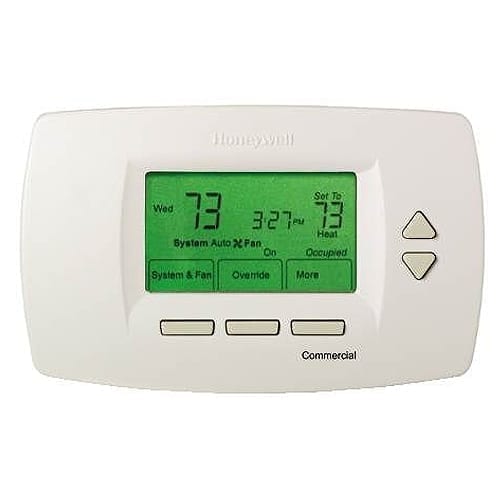Check Best Thermostat Pricing in Amazon
** As an Amazon Associate, I earn from qualifying purchases.
Yes, a low battery on a thermostat can affect heating. When the battery is low, the thermostat may not function properly, leading to incorrect temperature readings or a complete loss of control over the heating system. It is important to replace the battery promptly to ensure proper operation of the thermostat and heating system.
Signs of Low Battery on Thermostat
When the batteries in your thermostat are running low, several warning signs may indicate the need for replacement. One of the most apparent signs is a dim or unresponsive display, indicating low battery power. This can also be a sign of a dead battery.
Inaccurate temperature readings and inconsistent temperature control are also common symptoms of a struggling thermostat. Additionally, if your thermostat takes longer than usual to turn on or off, it may be due to insufficient battery power to send signals to your heating and cooling system.
Impact of Low Battery on Heating
A thermostat with low battery power can have a significant impact on the heating functionality of your HVAC system. When the batteries are dying or dead, your thermostat may lose its programmed settings, causing discomfort and inconvenience.
Without proper temperature control, your heating system may fail to provide the desired warmth, leaving you in a cold environment.
Moreover, the lack of power can prevent the thermostat from effectively communicating with the heating equipment, leading to underperformance or even a complete shutdown of the system. This can result in increased energy bills and potential damage to the HVAC system.
Changing Thermostat Batteries
If you notice any of the signs mentioned above, it is crucial to change the batteries in your manual, smart, or programmable thermostat. Most modern thermostats use AA or AAA batteries, which can be easily replaced. Follow the steps below to change your thermostat batteries:
Check Best Thermostat Pricing in Amazon
** As an Amazon Associate, I earn from qualifying purchases.
- Remove the thermostat from the wall by gently pulling it towards you or sliding it up the wall mount.
- Locate the battery compartment on the back of the thermostat.
- Open the compartment and remove the old batteries.
- Insert fresh batteries, ensuring the correct alignment of the positive and negative terminals.
- Replace the battery compartment cover and reattach the thermostat to the wall mount.
By changing the batteries, you can optimize the performance of your thermostat and ensure proper heating functionality.
Testing Thermostat Performance
After changing the batteries, it is essential to test the performance of your thermostat to ensure it is functioning optimally. Here are a few simple tests you can perform:
- “Fan-Only” Mode Test: Set your thermostat to “fan-only” mode to check if it can send signals to your HVAC system even when it’s not actively heating or cooling your home. This test helps verify if the thermostat can communicate with the system effectively.
- Temperature Reading Test: Set your thermostat to a desired temperature and compare it with a standalone temperature gauge. If both readings match, it indicates that your thermostat is accurately registering the temperature. However, if there is a significant difference, it may be a sign of a malfunctioning thermostat that requires professional repair or replacement.
Professional Thermostat Repair
If you have changed the batteries and performed the necessary tests, but your thermostat continues to struggle or malfunction, it is recommended to seek professional thermostat repair services. An HVAC technician can diagnose and fix any underlying issues affecting the performance of your thermostat. They can also provide guidance on whether a replacement is necessary, especially if your thermostat is outdated or beyond repair.
Benefits of Upgrading to a Smart Thermostat
In some cases, upgrading to a smart thermostat can offer additional benefits beyond simply replacing the batteries. Smart thermostats are hardwired into your electrical panel and do not rely solely on batteries for power. Here are some advantages of upgrading to a smart thermostat:
- Remote Temperature Control: With a smart thermostat, you can adjust your home’s temperature remotely using your smartphone. This allows you to ensure a comfortable environment, even when you’re not at home.
- Energy Efficiency: Smart thermostats provide energy usage reports and personalized suggestions to help you reduce your monthly energy costs. They can learn your schedule and adjust temperature settings accordingly, optimizing energy efficiency.
- Home Monitoring: Smart thermostats allow you to monitor your home’s temperature while you’re away, providing peace of mind and the ability to make adjustments as needed.
- Maintenance Reminders: Smart thermostats can send you helpful reminders when it’s time to change air filters or schedule other maintenance tasks for your HVAC system.
Additionally, smart thermostats eliminate the need for regular battery changes, as they are directly powered by your home’s electrical system.
Conclusion
The battery in your thermostat plays a crucial role in maintaining the functionality of your HVAC system, especially when it comes to heating. Low battery power can lead to discomfort, inaccurate temperature control, and increased energy bills.
Check Best Thermostat Pricing in Amazon
** As an Amazon Associate, I earn from qualifying purchases.


